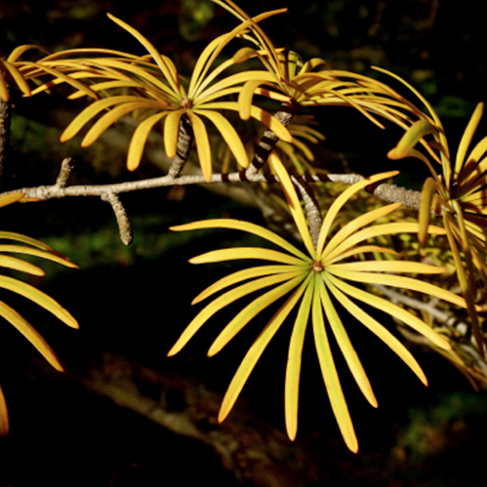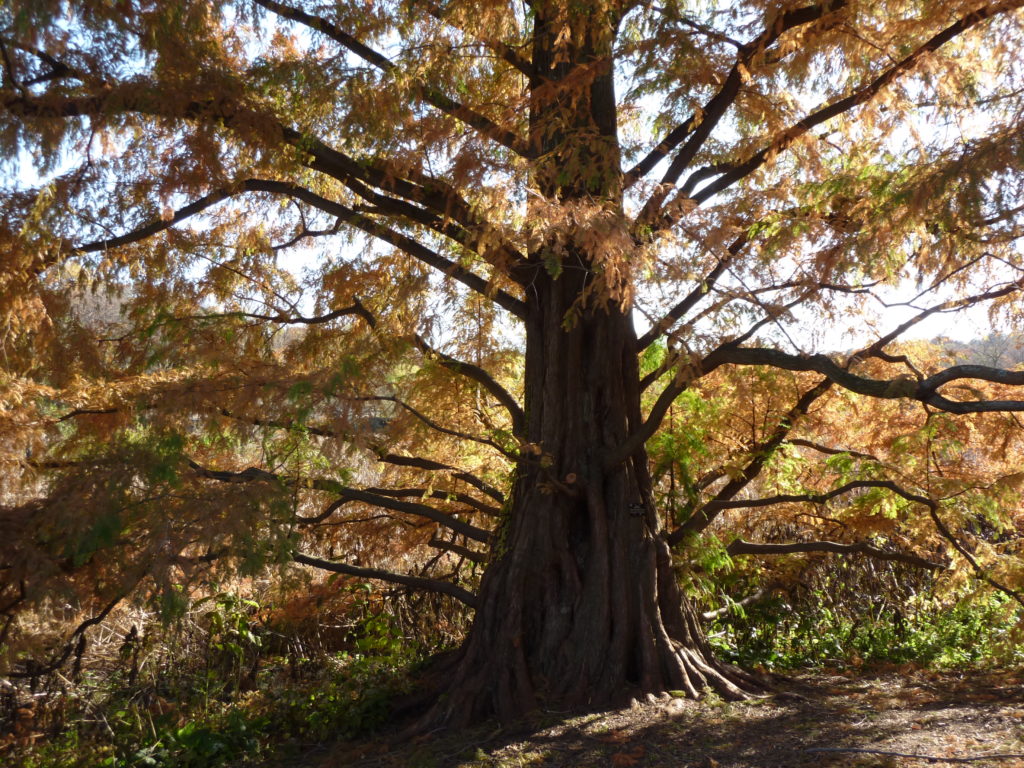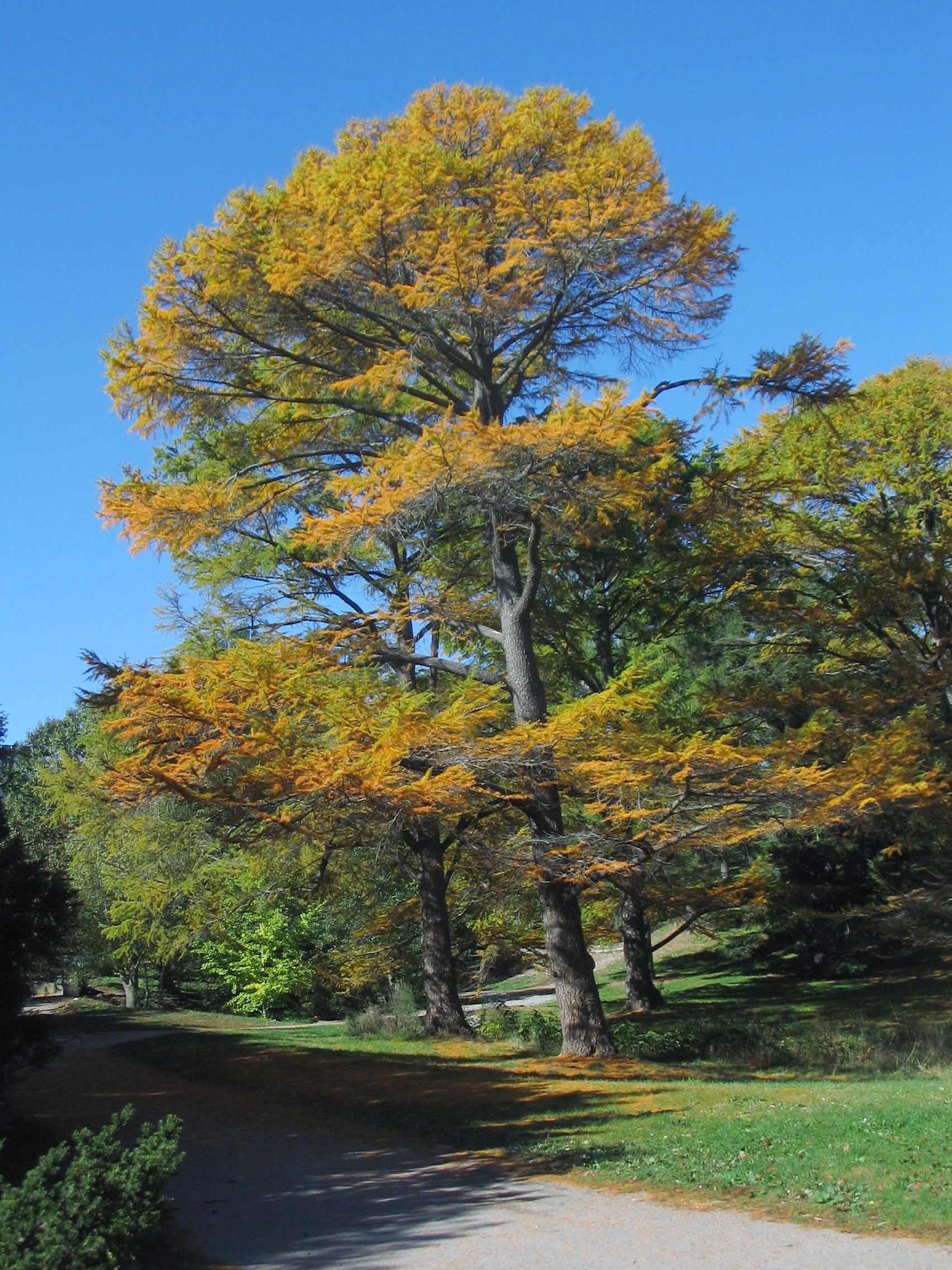
This rare native of East Asia puts on a golden show each fall before losing its needles.
At the Arnold Arboretum, autumn brings a multitude of rich colors. The golden larch—the sole member of its genus—stands out from the crowd with a vibrant display of needles ranging from bright golden-yellow to rich copper. This species is a member of the pine family, and like its brethren, produces seed-bearing cones each year. Unlike most conifers, however, the golden larch is deciduous—meaning that it will drop its foliage after the fall show, and grow clusters of soft new needles the following spring. It is one of several deciduous conifers that grow at the Arboretum, including multiple larch species, swamp and bald cypress, and dawn redwood.
This stately species was first introduced to the West by the notorious Scottish plant collector Robert Fortune. During his time working as a contracted collector for the Horticultural Society of London (known today as the Royal Horticultural Society) and the British East India Company, Fortune achieved fame transporting dozens of native Chinese species out of the country—sometimes illegally—and many made their way to North America by way of the nursery trade. Such was the case with golden larch, which Fortune first collected in 1853 in the area now known as Zhejiang Province.
At the Arnold Arboretum, accession 16779*A is featured most prominently in an assembly of golden larch viewed from Hemlock Hill Road. This tree, along with its nearby sibling, is the offspring of a venerable specimen growing ten miles away at the Hunnewell Estate in Wellesley, Massachusetts. In 1866, Horatio Hollis Hunnewell, a wealthy horticulture enthusiast, purchased a seedling in a four-inch pot from the English nursery Veitch and Sons. He eventually planted this tree among dozens of other coniferous species that would make up the Hunnewell Pinetum. The Pinetum, along with the rest of the grand historic landscape (including the first topiary garden in the United States and some of the first rhododendrons cultivated in North America), is still meticulously maintained as a central feature of the Hunnewell Estates Historic District.
By 1896, Horatio’s young golden larch had flourished, producing an abundance of seed. He shared some of this seed with Charles Sprague Sargent, a close friend and fellow plantsman who had helped establish the Arnold Arboretum two decades early. Two of the seeds grew into fine specimens that stand today on the bank of Bussey Brook near the Walter Street Gate, surrounded by a grove of other Pseudolarix—some sourced directly from Veitch, and others given by the Hunnewell family in later decades.
No matter the season, these trees are worth a visit. In spring, star-like clusters of yellow-green juvenile foliage emerge alongside dense clusters of male pollen cones. By summer, the needles—now longer, in a deep–emerald—have hardened off. Scattered among the impressive planar pads of foliage, maturing seed cones develop. By mid-October, as the entire tree takes on a golden hue, the cones turn a light-tan. As they dry, cone scales loosen from the central axis and disperse abruptly—the seeds borne within, scattered to the wind.
A year of abundant seed production is cause for sharing. From the Arboretum’s mature golden larches, thousands of seeds and seedlings have been distributed to nurserymen, women, and private plant enthusiasts over the years, thus perpetuating the cycling of horticultural collaboration that first brought this species to Boston.
China
Viewing this plant in-person? Look for these defining characteristics:
1
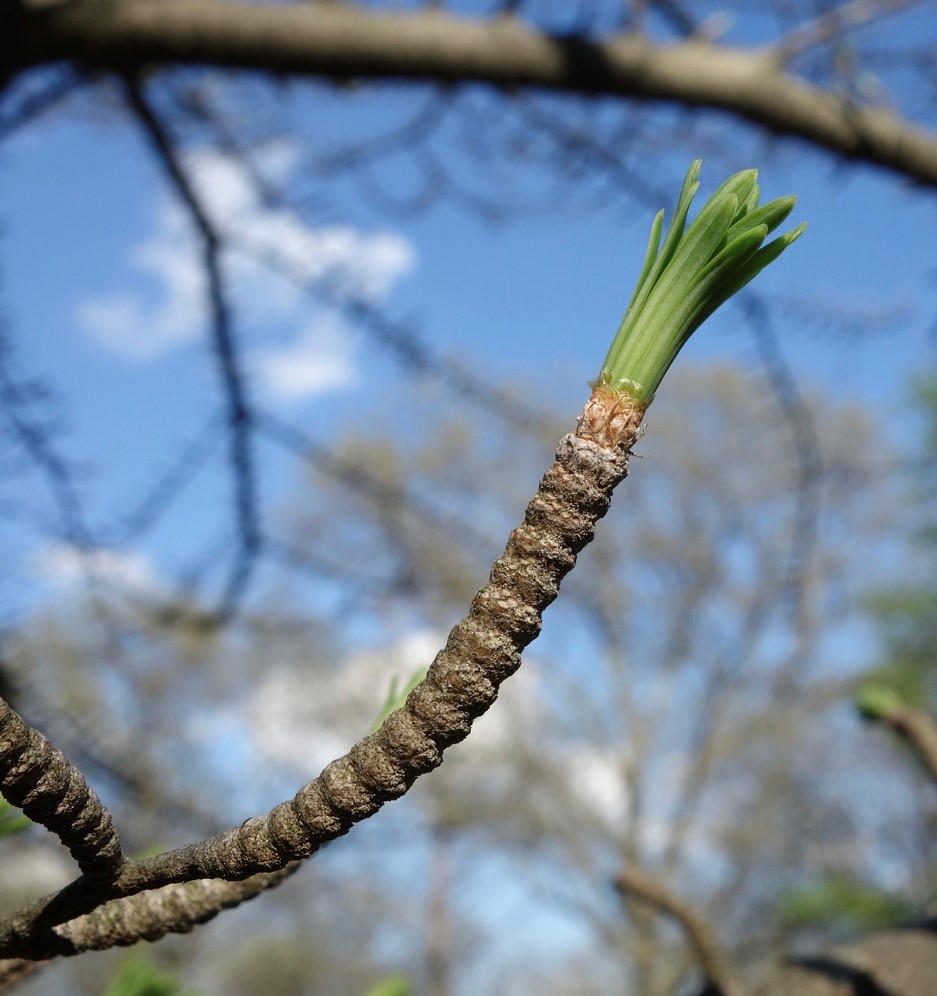
2
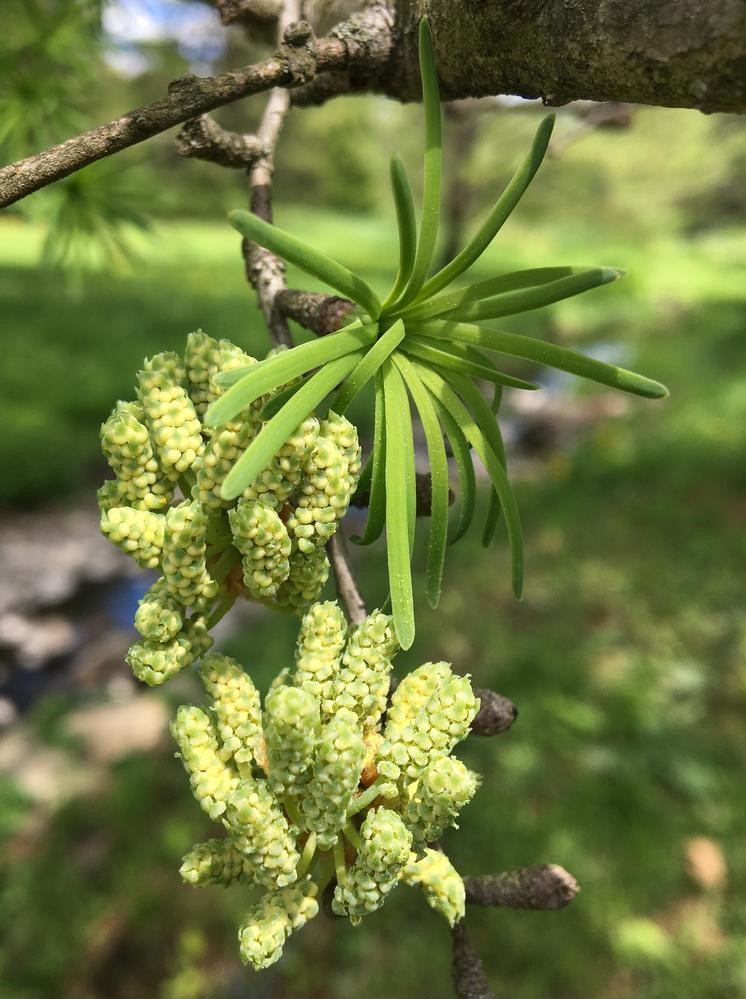
3
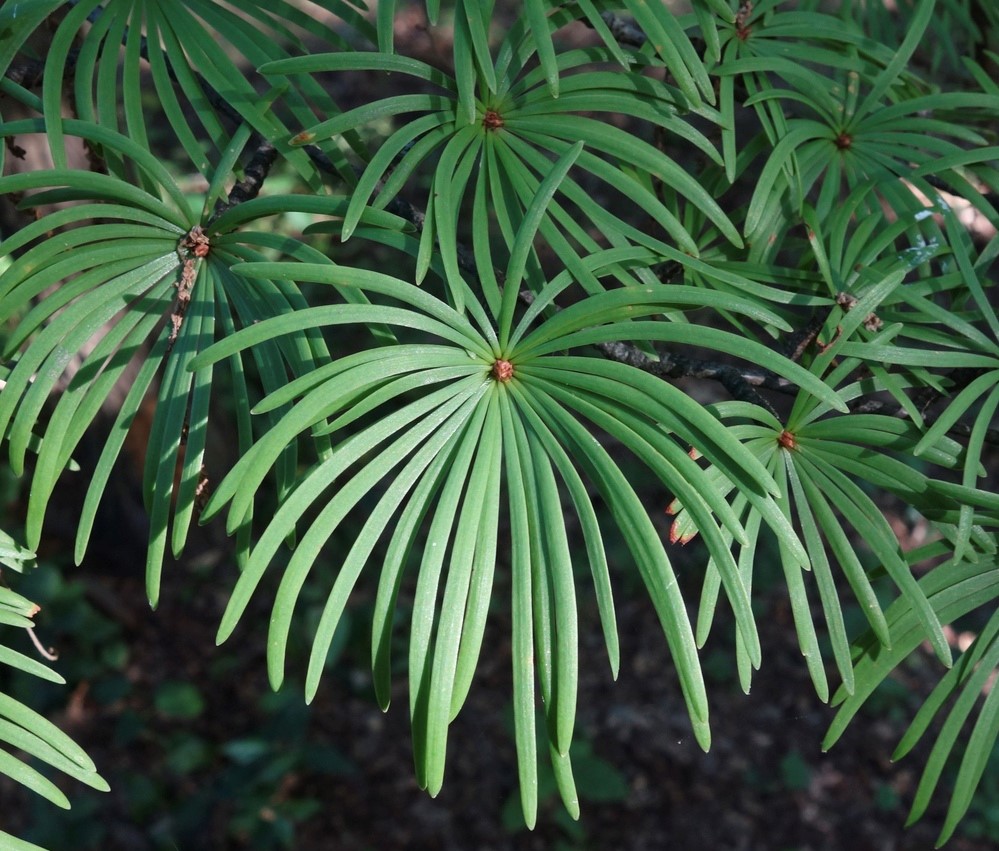
4
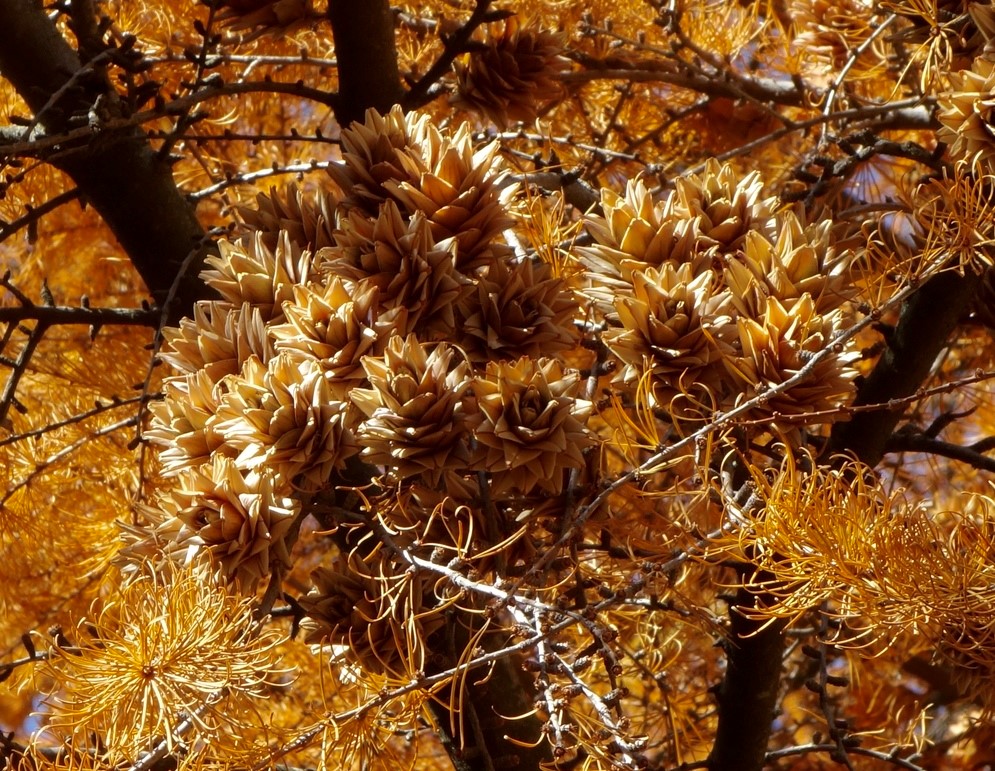
About Our Collection
Fun Facts
Stats
- Living Specimens
- Specimens Dead or Removed
- First Addition
- Most Recent Addition
- Tallest Specimen
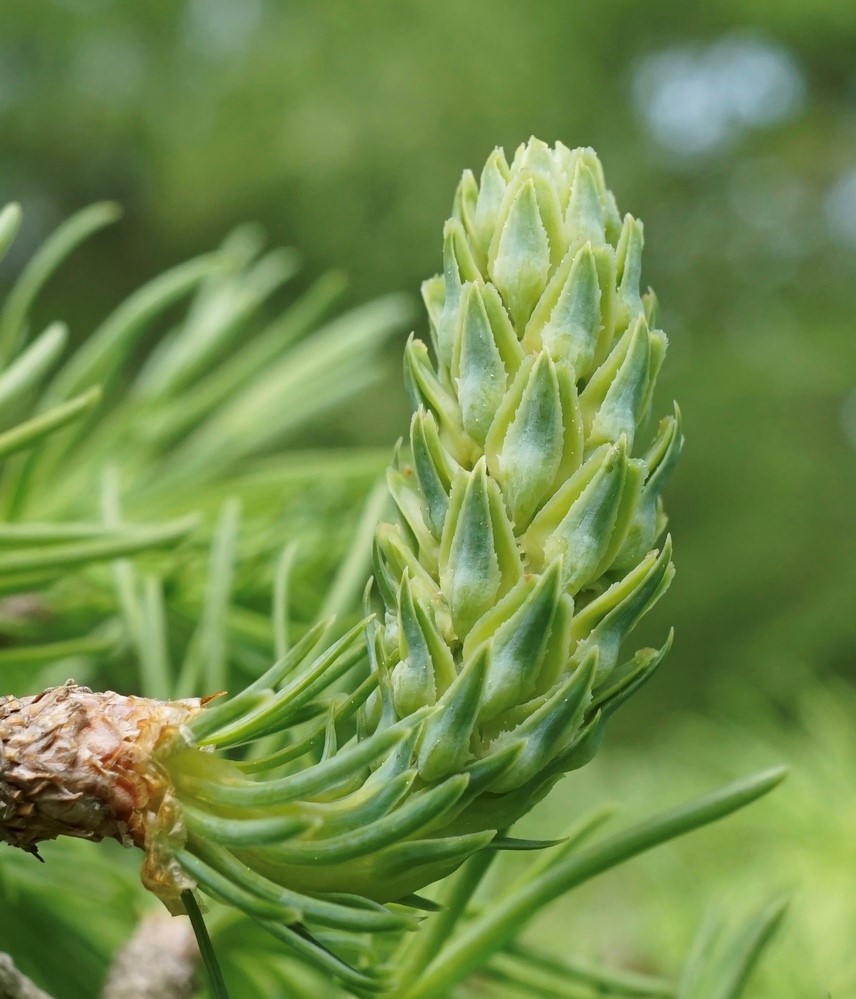
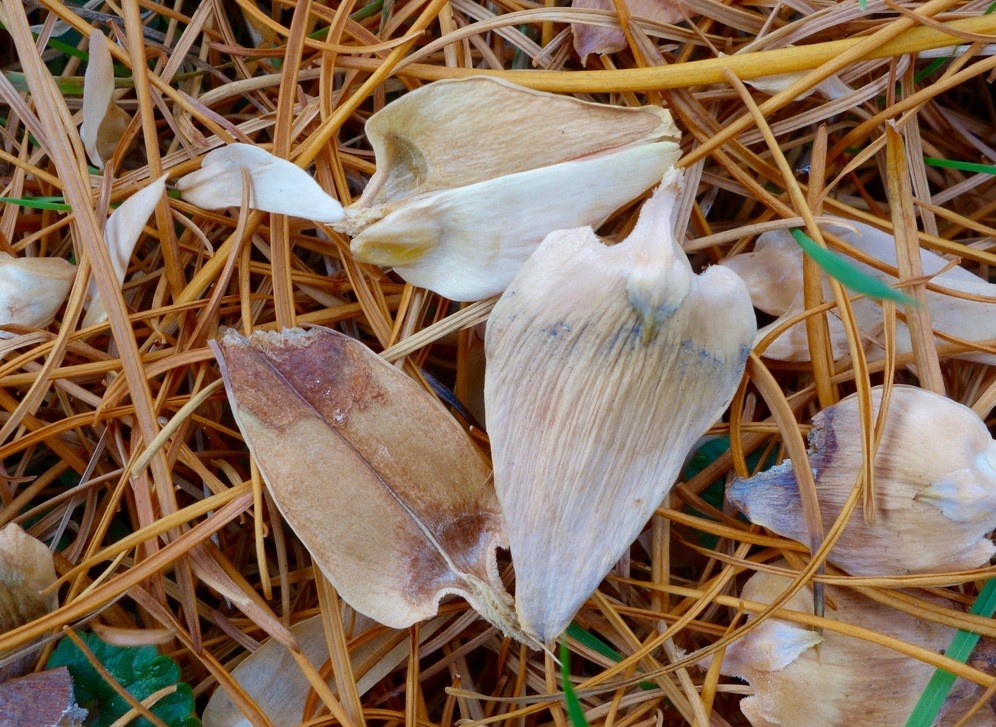
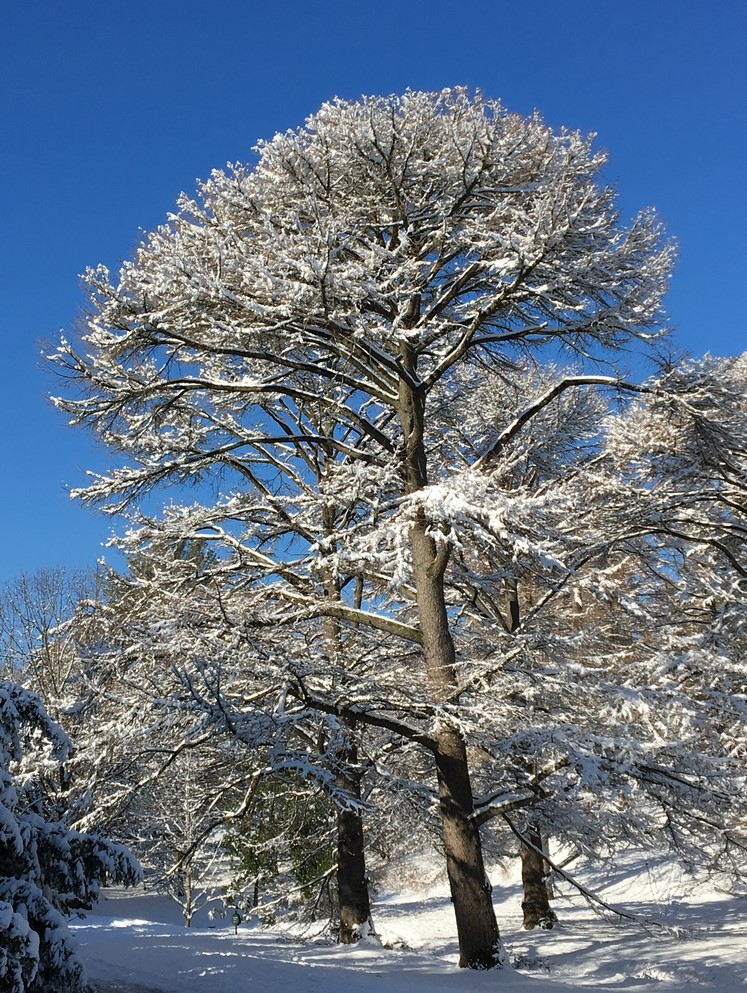
Living Specimens
| Plant ID | Accession Date | Received As | Origin | Source |
|---|---|---|---|---|
